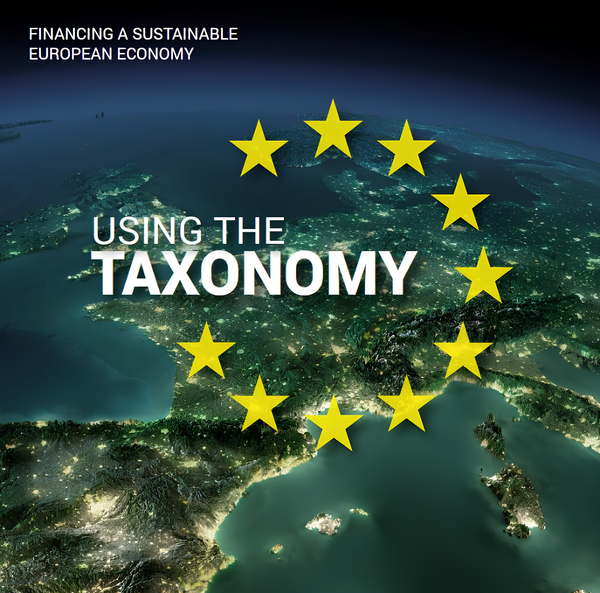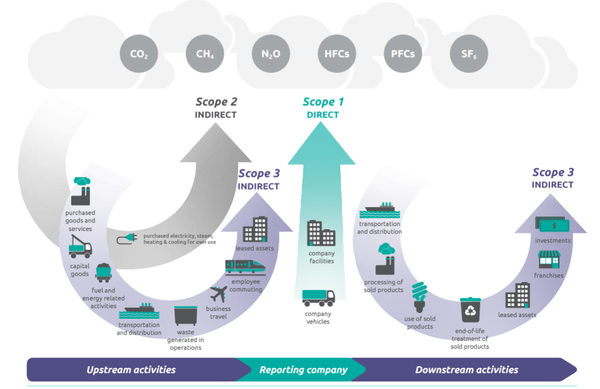Aligning with the Paris Agreement: Turning Commitments into Action

The Paris Agreement seeks to limit global temperature rise to well below 2°C above pre-industrial levels, while pursuing efforts to limit it to 1.5°C [1]. This objective has increasingly become a central strategic focus for businesses, driving companies to set climate targets aligned with scientific recommendations.
Although many corporations have pledged to reach net-zero emissions by 2050—based on IPCC recommendations rather than an explicit requirement of the Paris Agreement—these high-level commitments often do not reveal how effective a company’s climate strategy actually is [2].
In this article, we explore how companies can effectively align their climate strategies with the Paris Agreement by translating emissions targets into measurable temperature alignment scores. We break down how companies can leverage frameworks such as the Science Based Targets initiative (SBTi) Temperature Rating Methodology to measure, validate, and strengthen their climate commitments [3]. Through real-world case studies and sector-specific pathways, we highlight the critical role of robust greenhouse gas (GHG) emissions accounting, transparent reporting, and ongoing validation in moving beyond pledges to concrete, science-aligned actions.
SBTi and the Paris Agreement
The Science Based Targets initiative (SBTi) plays a pivotal role in translating the broad objectives of the Paris Agreement into actionable emission reduction pathways specifically tailored to individual sectors. By grounding corporate emissions targets in climate science, SBTi ensures that company strategies align with global decarbonization trajectories necessary for limiting warming to well below 2°C, ideally 1.5°C above pre-industrial levels [1], [4].
To achieve this, SBTi employs robust methodologies, primarily the Sectoral Decarbonization Approach (SDA) and the Absolute Contraction method. The SDA assigns sector-specific carbon budgets and reduction pathways based on scientifically established emission limits for each sector, considering their unique challenges and opportunities. Conversely, the absolute contraction method requires companies to reduce their absolute emissions uniformly, regardless of growth or sector-specific considerations, ensuring overall alignment with stringent global reduction needs [4].
A distinctive feature of the SBTi framework is the assignment of temperature alignment scores, a clear numeric rating such as "1.5°C-aligned," "well-below 2°C," or "2°C-aligned" [4]. These scores transparently indicate the ambition level of corporate climate targets, empowering investors, consumers, and stakeholders to rapidly assess how closely a company’s emissions reduction strategy adheres to the Paris Agreement's temperature objectives. This clarity facilitates informed decision-making, enhances stakeholder trust, and helps ensure businesses maintain accountable and credible climate actions [4], [5].
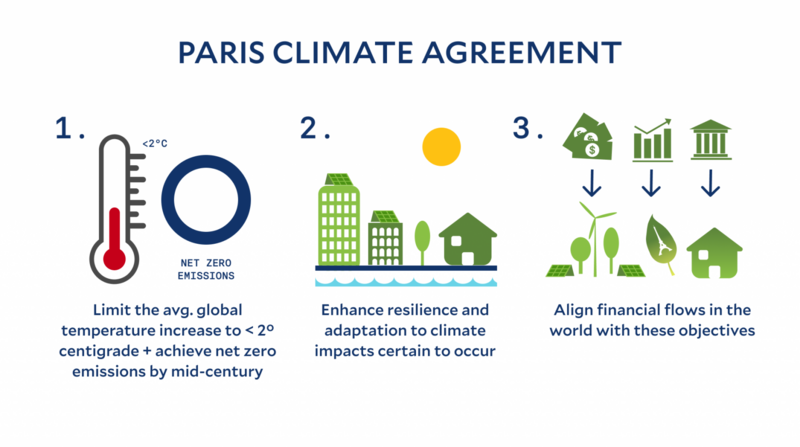
The SBTi Temperature Rating Methodology: A Step-by-Step Guide
Understanding how SBTi translates corporate targets into actionable pathways naturally leads to a practical question: how exactly does a company determine its alignment score? The SBTi Temperature Rating Methodology answers this by providing businesses with a structured, step-by-step approach for evaluating and validating their climate targets against globally recognized benchmarks. Below, we outline this methodology, guiding companies clearly from initial emissions accounting to achieving credible, validated temperature alignment scores aligned with the Paris Agreement [4].

1. Mapping Emissions Scopes
The foundational step in the SBTi Temperature Rating Methodology is accurately measuring and categorizing greenhouse gas (GHG) emissions according to the scopes defined by the Greenhouse Gas Protocol: Scope 1 (direct emissions from owned operations), Scope 2 (indirect emissions from purchased electricity and energy), and Scope 3 (indirect emissions occurring throughout the value chain, including upstream supply chain and downstream product use and logistics).
Comprehensive emissions accounting is critical because baseline data forms the foundation upon which credible, scientifically valid targets are established. Without a clear and accurate measurement of a company’s existing emissions profile, subsequent goals and strategies may lack relevance or fail to drive meaningful change.
By thoroughly mapping emissions across these three scopes, companies identify high-impact areas where emission reduction efforts will have the greatest benefit. For example, emissions accounting frequently highlights significant emission sources such as energy-intensive product manufacturing processes, transportation and logistics activities, and supplier-related emissions. Accurate measurement not only facilitates strategic decision-making but also supports focused investments in decarbonization efforts.
Beyond internal strategy, rigorous emissions accounting enhances transparency and credibility with key stakeholders, including investors, customers, regulators, and the broader public. Clear disclosure of emissions data demonstrates accountability, builds stakeholder trust, and positions a company as a responsible actor proactively managing climate risks [4].
An example is Maersk, a global leader in shipping, which has innovatively redefined emissions mapping through its comprehensive Emissions Dashboard. This tool provides detailed tracking and analysis of supply chain emissions, revealing carbon-intensive hotspots across different transportation modes and geographic regions. By offering businesses precise insights into their logistics-related emissions, Maersk empowers strategic decision-making, enabling companies to optimize routes, enhance operational efficiency, and effectively reduce their carbon footprint [6]. This demonstrates how robust emissions accounting can drive targeted climate action aligned with global temperature goals.

2. Establishing Science-Based Reduction Pathways
Once companies have accurately mapped their emissions, the next critical step is setting science-based targets (SBTs). Science-based targets are clearly defined, quantitative emission reduction goals aligned explicitly with the latest climate science. In practice, this means that corporate targets must correspond directly to the global carbon budgets and emissions trajectories identified by leading climate authorities, such as the Intergovernmental Panel on Climate Change (IPCC), as necessary to limit warming well below 2°C, ideally aiming for 1.5°C above pre-industrial levels [3], [4].
To illustrate, the British retail company Tesco established a science-based target committing to a 60% absolute reduction in its Scope 1 and Scope 2 emissions by 2025 compared to its 2015 baseline. This ambitious target was explicitly calculated in line with climate science recommendations to ensure that Tesco’s operations meaningfully contribute to global decarbonization efforts.

3. Assigning a Temperature Alignment Score
After defining their science-based targets, companies need a clear and credible way to quantify how their emissions reductions align with global climate scenarios. The Science Based Targets initiative (SBTi) addresses this need by providing a specialized Temperature Alignment Tool, which translates corporate emissions reduction targets into a specific numeric temperature alignment rating [4].
The tool functions by benchmarking a company’s projected emission reductions against scientifically established global warming scenarios, typically those consistent with limiting warming to 1.5°C or well below 2°C. The resulting temperature rating—such as “1.5°C-aligned” or “well-below 2°C”—enables stakeholders to rapidly assess the adequacy and ambition level of a company’s climate commitments without complex analysis [4].
An example is Maersk, the global shipping company, which aims to achieve net-zero emissions across its entire business by 2040—ten years ahead of the commonly referenced 2050 timeline. Maersk’s interim 2030 targets, including significant reductions in emissions per transported container, have earned the company a clear 1.5°C-aligned temperature rating under the SBTi framework [6]. This alignment score highlights Maersk’s ambition and rapid decarbonization strategy in the challenging shipping sector, demonstrating how temperature alignment scores serve as effective communication tools for transparently conveying corporate climate ambitions to investors, customers, and other stakeholders.
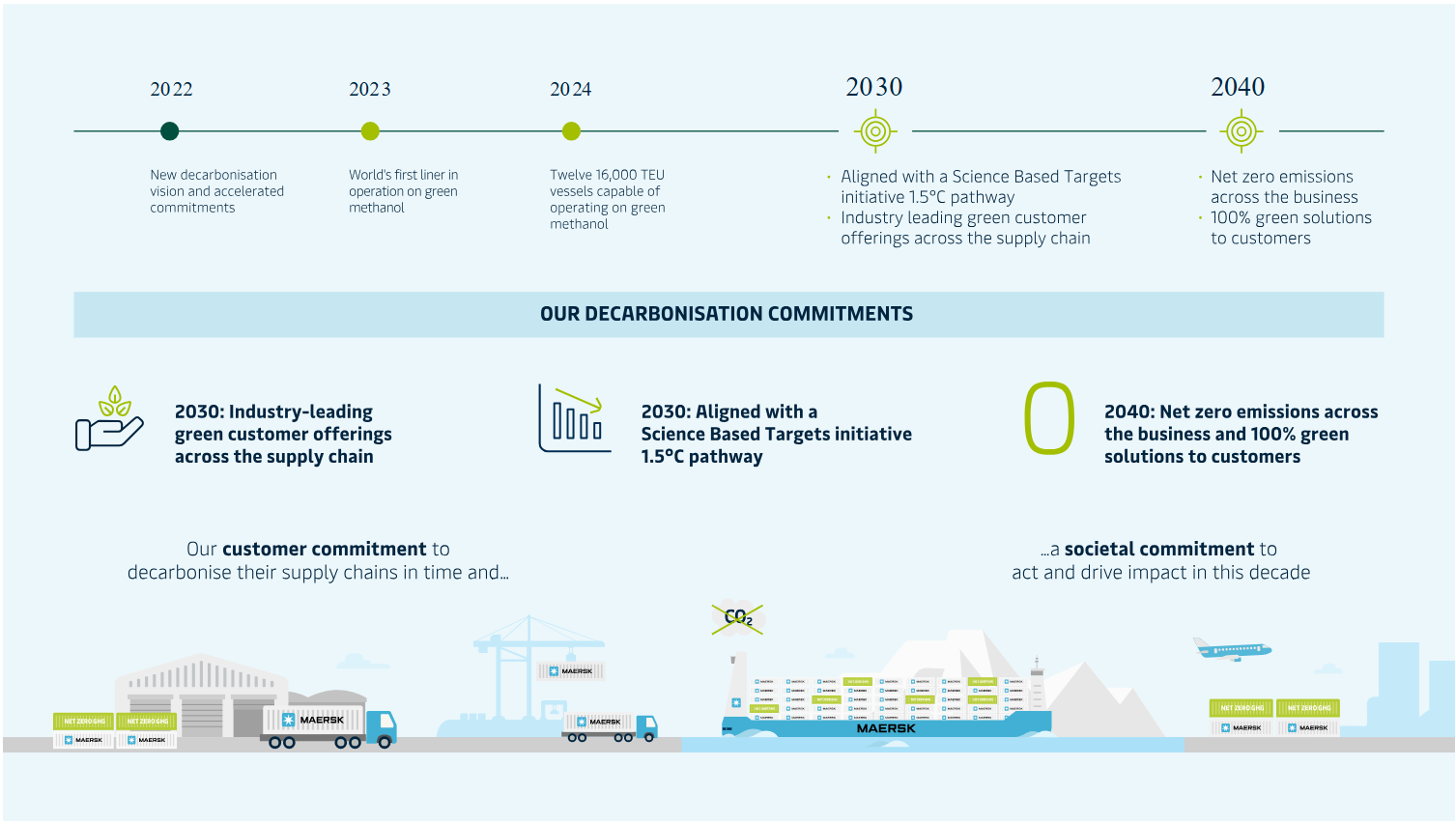
4. Validating and Communicating Targets
Validation is an essential final step in the SBTi methodology, as it ensures that corporate climate targets are not only ambitious but also credible and transparent. Third-party validation helps protect against "greenwashing"—situations where companies claim significant climate action without genuinely committing to meaningful emission reductions. By undergoing independent verification, companies demonstrate that their targets genuinely align with established climate science and international decarbonization pathways, significantly enhancing their credibility with stakeholders [4].
The SBTi is a validation body, known globally for its rigorous, science-backed validation process [4]. Other notable entities providing climate target validation include the Carbon Disclosure Project (CDP), whose assessments also reinforce transparency and accountability in corporate climate strategies.
An example of successful validation and transparent communication is Heineken, the global brewing company. Heineken set ambitious, 1.5°C-aligned targets, committing to achieve net-zero emissions in its own operations by 2030 and across its entire value chain by 2040 [5]. These goals were rigorously validated by the SBTi, confirming their alignment with global climate goals. By transparently communicating its validated targets and providing regular progress reports, Heineken builds strong trust among investors, customers, and regulators. Such openness demonstrates how credible validation transforms broad climate commitments into tangible, actionable, and science-based climate actions, effectively strengthening stakeholder confidence in the company's sustainability strategy [5].
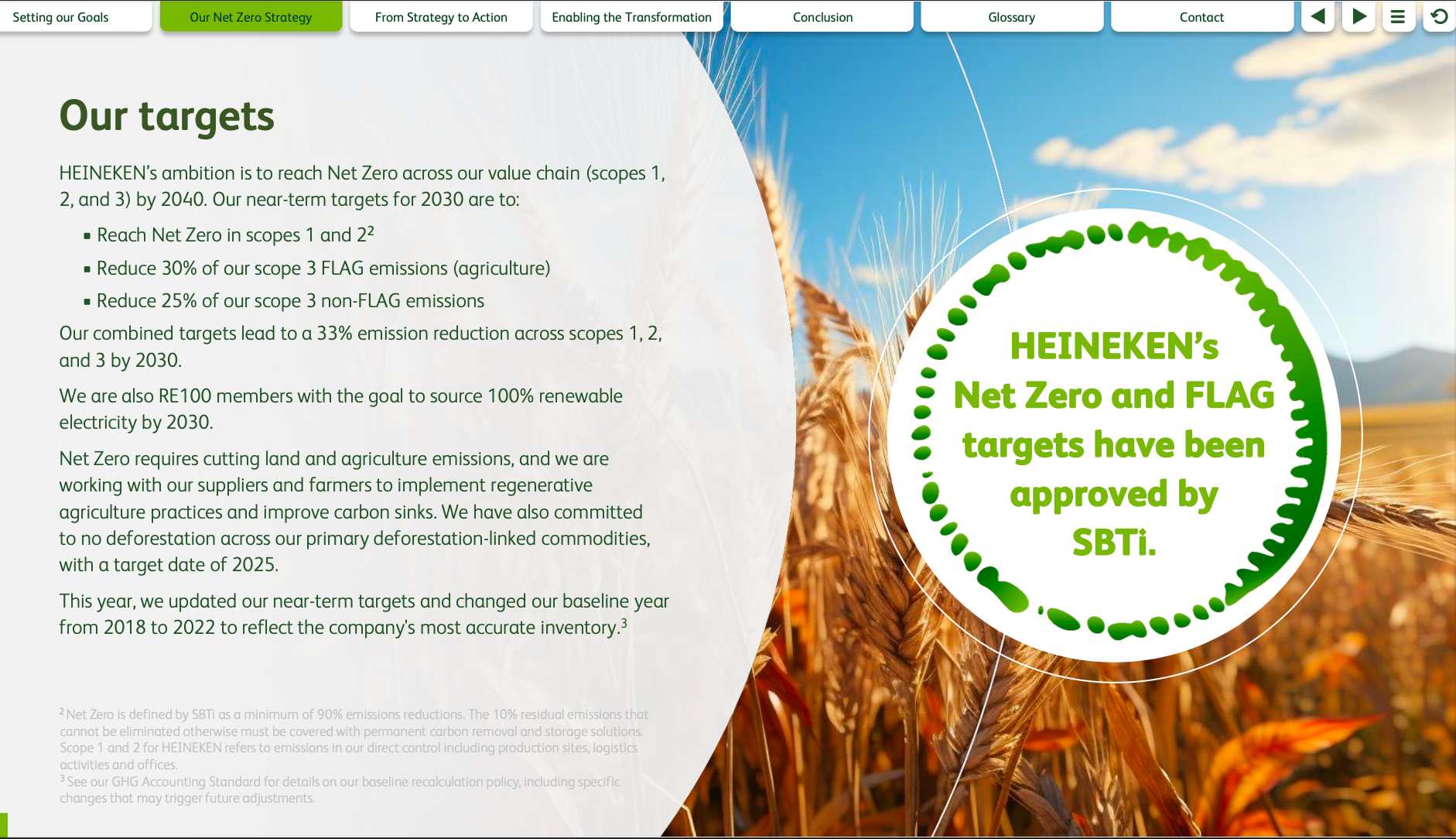
Paris Alignment in Practice: Industry Examples of Science-Based Targets
Different industries face distinct climate challenges and opportunities. These real-world examples illustrate how companies across various sectors leverage the SBTi Temperature Rating Methodology to align their actions effectively with the Paris Agreement goals.
Retail: Tesco – Enhancing Interim Targets Post-Paris Agreement
Following the Paris Agreement, UK-based retailer Tesco significantly enhanced its climate strategy, adopting a more ambitious interim target: achieving a 60% reduction in Scope 1 and Scope 2 emissions by 2025 compared to a 2015 baseline. This robust target received validation from the SBTi, confirming its alignment with global science-based pathways necessary to stay within 1.5°C warming. Tesco's strategy includes transitioning to renewable electricity and engaging directly with suppliers to ensure comprehensive reductions throughout its supply chain.

Apparel: H&M – Engaging Suppliers to Tackle Scope 3 Emissions
Swedish apparel giant H&M has placed Scope 3 emissions—primarily those generated by its vast network of suppliers—at the forefront of its sustainability strategy. Recognizing that supplier emissions account for the largest share of its carbon footprint, H&M actively partners with suppliers to facilitate their transition to renewable energy sources and implement energy efficiency measures. These initiatives reflect H&M’s robust science-based target framework validated by SBTi, ensuring ambitious, credible climate action throughout the company’s value chain.
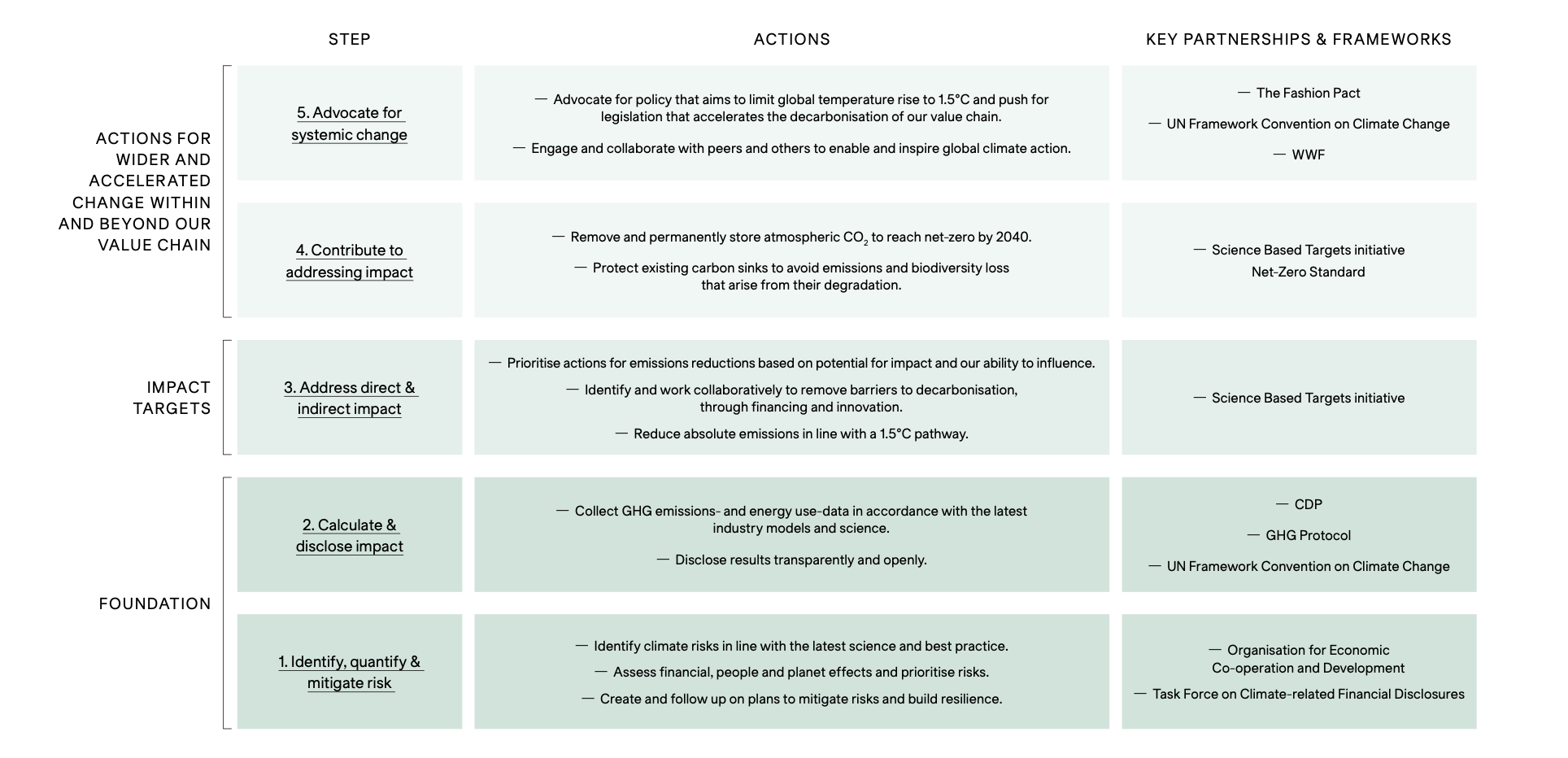
Heavy Industry: SSAB – Pioneering Fossil-Free Steel with Hydrogen
The Swedish steel manufacturer SSAB is pioneering deep decarbonization in the challenging heavy industry sector through its innovative hydrogen-based steelmaking project, HYBRIT (Hydrogen Breakthrough Ironmaking Technology).
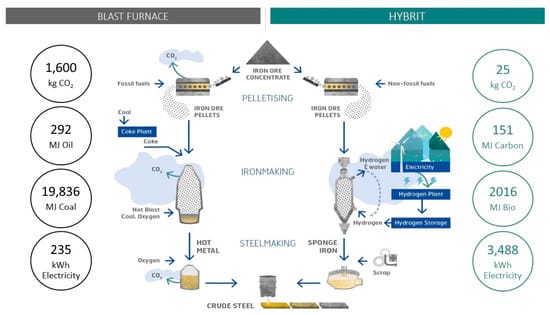
By replacing coal with renewable hydrogen, SSAB targets substantial emissions reductions validated by SBTi as consistent with a well-below 2°C trajectory (in the process to update to 1.5 2°C trajectory), demonstrating a clear industry-leading approach to deep industrial decarbonization.
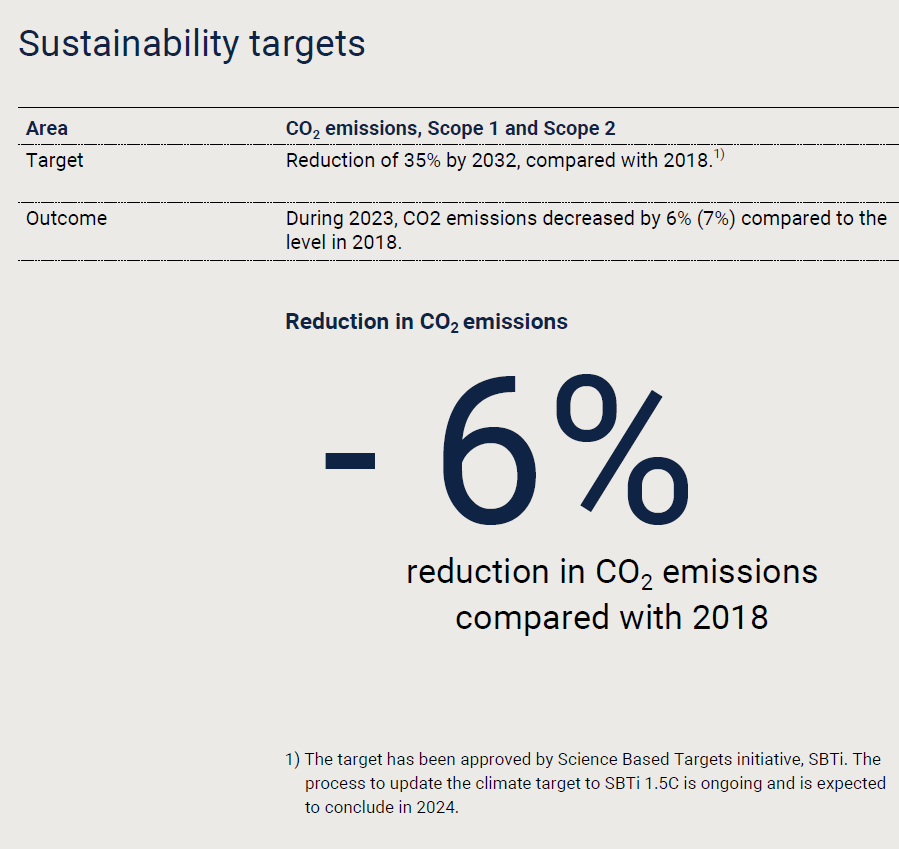
Finance: Schroders – Aligning Investment Portfolios to 1.5°C
Financial institutions like global asset manager Schroders play a pivotal role in facilitating economy-wide emissions reductions through capital allocation. Schroders has set ambitious science-based targets validated by the SBTi, aligning its investment portfolios with a 1.5°C warming scenario. This approach ensures that Schroders' investment strategies proactively support companies committed to meaningful decarbonization, significantly amplifying global climate impacts.
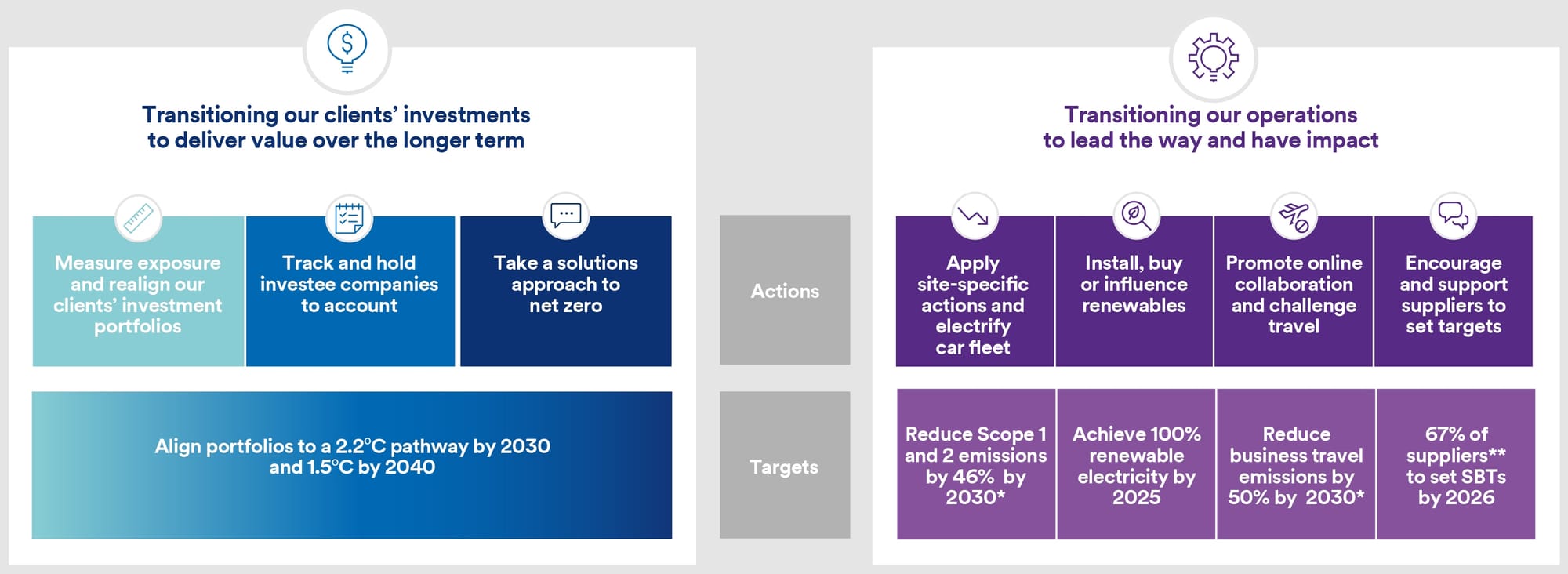
Each sector encounters unique barriers to achieving science-based climate targets. Retailers like Tesco must collaborate deeply with suppliers, apparel companies such as H&M focus intensely on supply-chain engagement, heavy industries represented by SSAB invest in breakthrough technologies, and financial institutions like Schroders drive strategic capital allocation. Success demands targeted innovation, cross-sector collaboration, clear target-setting, and validation through frameworks such as SBTi to ensure accountability and transparency.
Benefits and Challenges
Benefits of Aligning with Paris Agreement:
| Enhanced stakeholder trust | Clear, science-based targets validated by trusted third parties like SBTi and CDP strengthen transparency and credibility. |
| Improved competitive advantage | Companies that adopt ambitious targets often attract sustainability-minded investors and consumers, enhancing their market position. |
| Operational innovation and efficiency | Embracing science-based targets fosters innovation, reduces waste, and unlocks cost-saving opportunities. |
| Regulatory resilience | Early alignment with Paris goals prepares companies for evolving climate regulations and reduces future compliance risks. |
Common Pitfalls and How to Avoid Them:
| Greenwashing | Avoid superficial climate pledges by ensuring targets undergo rigorous third-party validation and maintaining transparency through regular reporting [7]. |
| Short-term financial pressures | Clearly communicate long-term value creation through climate action, leveraging sustainability-linked financial products to manage transitional costs effectively. |
| Technological barriers | Prioritize investment in innovation, pilot new technologies proactively, and engage in collaborative initiatives to overcome implementation challenges [7]. |
| Regulatory uncertainty | Stay proactively involved in policy dialogues, advocate for clear and stable climate policies, and maintain flexibility in strategy implementation [7]. |
Turning Climate Ambition into Real-World Impact
Aligning corporate actions with the Paris Agreement is not only ethically responsible—it's strategically essential for thriving in today’s rapidly evolving market. Companies that proactively set and validate science-based targets position themselves as industry leaders, unlocking innovation, enhancing investor confidence, and securing long-term resilience. However, genuine alignment demands immediate, measurable steps rather than distant promises or vague commitments.
Ready to translate your climate commitments into measurable action?
To start your journey toward credible and transparent climate action, leverage Tracenable’s Climate Targets Data Product. This comprehensive dataset provides detailed insights into global companies' GHG emissions reduction targets, empowering you to benchmark your organization's goals against industry peers. Easily identify best practices, understand market trends, and access verified target data that can be seamlessly integrated into platforms such as the SBTi Temperature Alignment Tool. Clearly communicate your organization's progress and confidently demonstrate your commitment to aligning with the Paris Agreement.
References
[1] United Nations Framework Convention on Climate Change (UNFCCC), “The Paris Agreement,” 2015. [Online]. Available: https://unfccc.int/process-and-meetings/the-paris-agreement. [Accessed: 09-Mar-2025].
[2] Intergovernmental Panel on Climate Change (IPCC), “Global Warming of 1.5°C,” Special Report, 2018. [Online]. Available: https://www.ipcc.ch/sr15/. [Accessed: 09-Mar-2025].
[3] Center for Climate and Energy Solutions (C2ES), “Corporate Climate Action,” [Online]. Available: https://www.c2es.org/content/corporate-climate-action/. [Accessed: 09-Mar-2025].
[4] Science Based Targets initiative (SBTi), “SBTi Corporate Manual: Temperature Rating Methodology,” [Online]. Available: https://sciencebasedtargets.org/resources/files/SBTi-Temperature-Rating-Methodology.pdf. [Accessed: 09-Mar-2025].
[5] Heineken, “HEINEKEN’s Net Zero Roadmap,” Dec. 2023. [Online]. Available: https://www.theheinekencompany.com/sites/heineken-corp/files/heineken-corp/sustainability-and-responsibility/environmental-sustainability/net-zero-deck-december-2023.pdf. [Accessed: 09-Mar-2025].
[6] Maersk, “Maersk Accelerates Climate Action to Reach Net Zero Emissions by 2040,” Press Release, 2022. [Online]. Available: https://www.maersk.com/news/articles/2022/01/12/maersk-accelerates-climate-action-to-reach-net-zero-emissions-by-2040. [Accessed: 09-Mar-2025].
[7] N. O. Peer, “Corporate Climate Targets: Between Science and Climate Washing,” 2024.
Available: https://scholar.law.colorado.edu/faculty-articles/1638/#:~:text=The use of corporate climate,liability when commitments turn out [Accessed: 09-Mar-2025].


